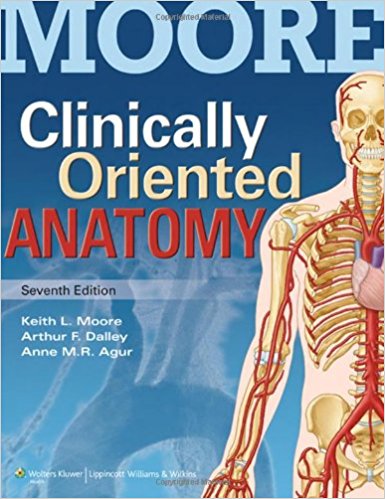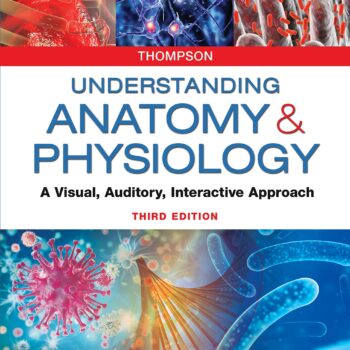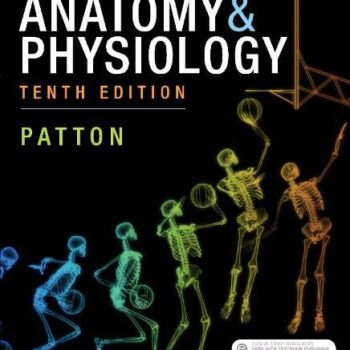
Clinically Oriented Anatomy 7Th Ed By Agur Dalley – Test Bank
Original price was: $55.00.$25.00Current price is: $25.00.
Digital item No Waiting Time Instant DownloadISBN-10: 1451119453 ISBN-13: 978-1451119459Publisher: Lippincott Williams & Wilkins; 7th editionAuthors: Keith L. Moore, Anne M. R. Agur, Arthur F. Dalley
Medicine is a field that requires ample resources and the Test Bank for the Clinically Oriented Anatomy 7th Edition by Agur Dalley is a beneficial source for everyone. This preparation guide offers a compiled list of questions with answers related to the textbook catering to the needs of the user. This ensures that you are in fact prepared for the exam and able to understand the practical aspects of it as well.
Why Go With This Test Bank?
Anatomy is hard and we are well aware, and that is why this test bank tries to combat the problem and assist you in learning more easily and effectively. It focuses on anatomy that is useful in real life so that practical and theoretical knowledge do not feel disconnected and that understanding can be achieved with confidence in a clinical environment.
Key Topics Covered:
The test bank offers variety and covers an array of topics that are necessary, such as:
- Musculoskeletal System: Understand the components of the body that include the muscle, joint and skeleton.
- Nervous System: Get insight on components and how brain, spine, and nerves are structured and functioned.
- Cardiovascular System: Acquire knowledge concerning blood vessel and heart anatomy.
- Respiratory System: Comprehend how breathing and gas exchange works.
- Digestive System: Get to know about the organs that aid the process of eating food and absorbing its nutrients.
Advantages of the Clinically Oriented Anatomy Test Bank
There are lots of benefits that the Clinically Oriented Anatomy Test Bank comes with. They include:
- Maximum Eye on Improvement – Repeated Questions increase understanding of the major topics thus providing a clue regarding real exams.
- Wasted Time is Minimized – With appropriate material incorporated for a textbook, loads of time is cut down.
- Less Anxiety during Exams – This aids in strengthening the knowledge and skills one possesses resulting in greater confidence.
Instructions on how to use the Test Bank
In order to be successful with this type of test bank, these steps should be followed:
- Annual Planning – Schedule test bank questions into a daily activity to help with learning further.
- What Needs to be Done – Utilise the test bank to determine the sections that require further studying.
- Training Grammar School Style – The ability to manage time is essential when taking an exam so practices with time limits is necessary.
Summary
If a degree in anatomy is crucial then getting the Clinically Oriented Anatomy 7th Edition by Agur Dalley – Test Bank is critical as it prepares one for the working world and education with all the resources.
Clinically Oriented Anatomy 7Th Ed By Agur Dalley – Test Bank
Which of the following is incorrect pertaining to the ribs?
A)
The first 7 are referred to as vertebrosternal ribs.
B)
Ribs 11 and 12 are typically “floating” (vertebral, free) ribs.
C)
The tubercle of a typical rib attaches to the inferior articular facet of the corresponding vertebrae.
D)
The head of a typical rib articulates with the bodies of two vertebrae.
E)
The costal groove is associated with the intercostal vessels and nerve.
Ans:
C
|
2. |
Rib fractures: |
|
A) |
are more likely to occur in children than adults. |
|
B) |
are most likely to occur at the junction of the rib and its corresponding vertebrae. |
|
C) |
most often occur in the 1st rib. |
|
D) |
in the lower ribs may be associated with tearing of the diaphragm. |
|
E) |
are not typically painful. |
|
Ans: |
D |
|
3. |
The sternal angle: |
|
A) |
indicates the location of the joint between the costal cartilage of the 2nd rib and the sternum. |
|
B) |
occurs where the 1st rib attaches to the sternum. |
|
C) |
is the least likely part of the sternum to fracture in the elderly. |
|
D) |
occurs at the sternoclavicular joint. |
|
E) |
is a depression in the body of the sternum. |
|
Ans: |
A |
|
4. |
Which of the following is incorrect pertaining to the sternum? |
|
A) |
It may be surgically split in the median plane to gain access to the thoracic cavity. |
|
B) |
It may be used for a bone marrow biopsy. |
|
C) |
It may have a perforation (sternal foramen) that is sometimes the site of a pleural herniation, which is a life-threatening situation. |
|
D) |
In violent thoracic trauma (e.g., automobile accident), comminuted fractures are not uncommon. |
|
E) |
Its xiphoid process may partially ossify, producing a pronounced lump. |
|
Ans: |
C |
|
5. |
The superior thoracic aperture: |
|
A) |
is bounded posteriorly by the axis. |
|
B) |
is bounded anterolaterally by the clavicle. |
|
C) |
is bounded anteriorly by the trachea. |
|
D) |
is a larger opening than the inferior thoracic aperture. |
|
E) |
is, anatomically, the thoracic inlet. |
|
Ans: |
E |
|
6. |
Which of the following associations is incorrect? |
|
A) |
rib separation—separation of a rib and its costal cartilage |
|
B) |
rib dislocation (slipping rib syndrome)—separation of a costal cartilage from the sternum |
|
C) |
joints between costal cartilage of ribs 2–7 and sternum—symphyses |
|
D) |
rib movements—mostly around a transverse axis passing through the head, neck, and tubercle |
|
E) |
rib movements—increase A-P diameter of the thorax during respiration |
|
Ans: |
C |
|
7. |
Which of the following associations is incorrect? |
|
A) |
serratus posterior superior—potentially can elevate superior ribs |
|
B) |
scalenus anterior—stabilizes 1st rib enabling more effective rib elevation during forced inspiration |
|
C) |
external intercostal muscles—attach to the sternum |
|
D) |
intercostal vessels and nerve—travel between internal and innermost intercostals muscles |
|
E) |
diaphragm—primary muscle of respiration |
|
Ans: |
C |
|
8. |
The endothoracic fascia: |
|
A) |
is continuous with the clavipectoral fascia. |
|
B) |
provides a surgical cleavage plane between the thoracic wall and the costal parietal pleura. |
|
C) |
attaches to the suspensory ligaments of the breast. |
|
D) |
contains the intercostal muscles. |
|
E) |
may become fibrous and thus interfere with normal respiratory movements. |
|
Ans: |
B |
|
9. |
A patient complains to you of pain in a limited strip on one side of his chest and back. Upon examination you notice that the skin associated with the T3 dermatome of that side is red with vesicular eruptions. Which of the following is your most reasonable conclusion about your patient’s illness? |
|
A) |
He has syphilis. |
|
B) |
He has shingles (herpes zoster). |
|
C) |
He has localized dermatitis. |
|
D) |
An underlying thoracic disease has spread through the thoracic wall to the skin. |
|
E) |
It is likely that the condition will spread to surrounding dermatomes before it improves. |
|
Ans: |
B |
|
10. |
Which of the following is incorrect pertaining to the internal thoracic (mammary) artery? |
|
A) |
It helps supply the breast via its anterior intercostal branches. |
|
B) |
It passes anterior to the clavicle. |
|
C) |
It lies superficial to the slips of the transverse thoracic muscle. |
|
D) |
It is in contact with the parietal pleura. |
|
E) |
It terminates in the 6th intercostal space by becoming the superior epigastric and musculophrenic arteries. |
|
Ans: |
B |






